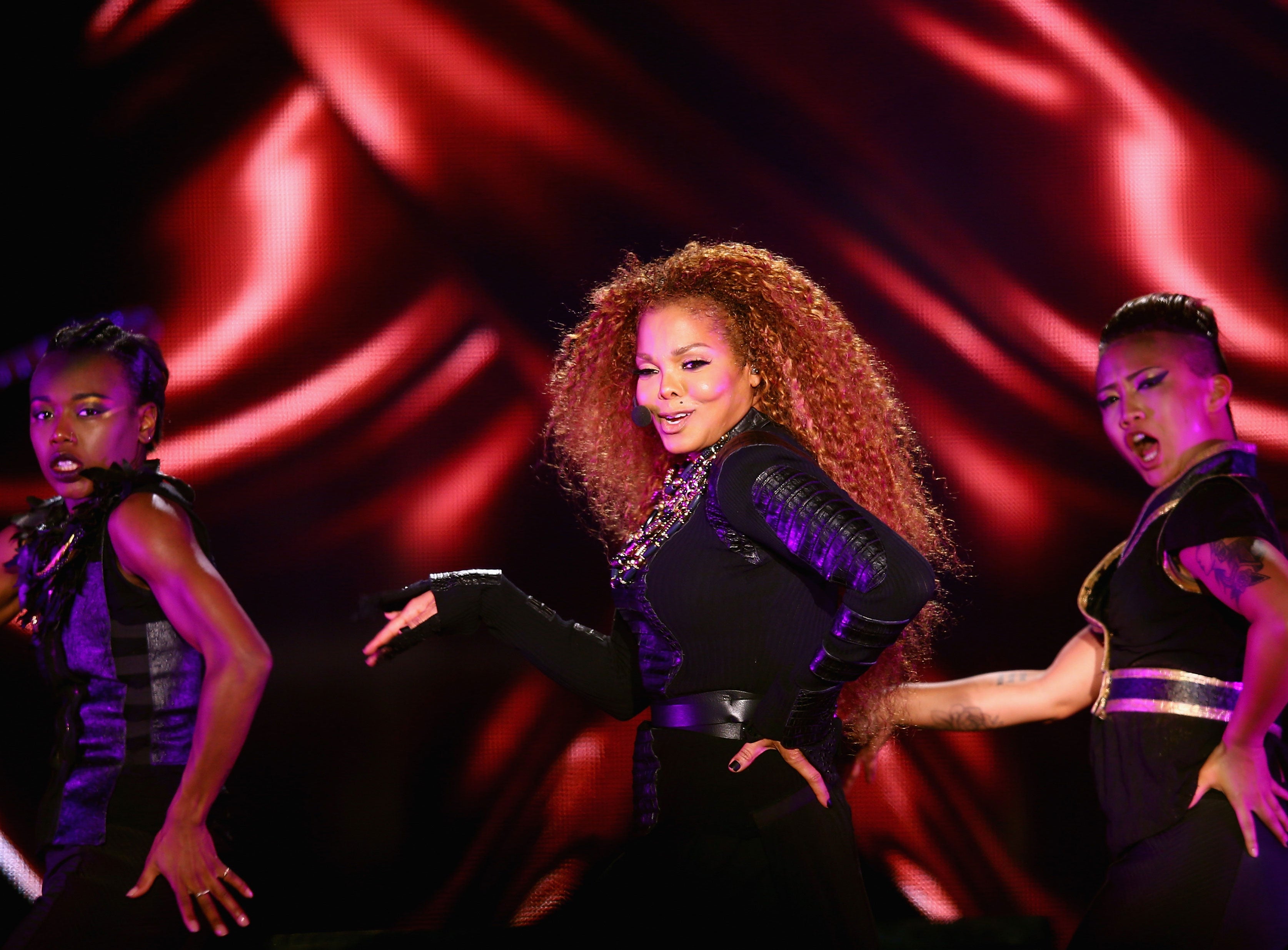
We were a little suspect when Janet Jackson announced plans back in April to suspend the second leg of her Unbreakable world tour. While she didn’t exactly say she was pregnant, her “my husband and I are planning our family” comment was a pretty good indicator.
A message from Janet…https://t.co/KrzYZ4eyvD
— Janet Jackson (@JanetJackson) April 6, 2016
Fast forward a month later and the 49-year-old has just confirmed that, yes, she is with child. Dammn, Baby! (Sorry we couldn’t resist).
The official video for #DammnBaby is here! @JanetJackson - Dammn Baby (Music Video) https://t.co/tpDm5INigw
— Janet Jackson (@JanetJackson) May 6, 2016
12 Reasons Why We’ll Always Love Janet Jackson
Easing up on your activity level is pretty common when it comes to expectant mothers, so kudos to Janet for knowing she needed to slow down a bit. But don’t get it twisted, a bun in the oven DOES NOT mean you have to become a complete couch potato. In fact, the American Congress of Obstetrics and Gynecologists (ACOG) recommends that women with uncomplicated pregnancies engage in moderate-intensity exercise (think walking, jogging, swimming and yoga) for 30 minutes at least five days a week. And for good reason too. It will keep your weight gain in check as well as offers a decreased risk of co-morbid conditions such as hypertensive disorders of pregnancy and gestational diabetes.
“I have found in my practice that patients that continue to exercise during pregnancy have an overall healthier pregnancy and postpartum course,” explains Fonda Webb Martin, MD, an OBGYN in Atlanta, GA, who recommends consulting with your obstetrician before beginning or continuing an exercise regimen. “The bounce back (postpartum) course is also significantly shorter in women that have incorporated exercise into their regimen prior to and during their pregnancy.”
Adds Tamara Pridgett, a NASM certified trainer with a women’s specialization and founder of FitMamaCity, a community specializing in strength training for pregnant women: “For some odd reason pregnancy is seen as a disability, especially when it comes to working out. Those old wives tales are exactly that, OLD. Being pregnant and maintaining a healthy, active lifestyle only benefits the mother and child.”
Janet Jackson Announces New Music and World Tour
Plus there is something pretty badass about seeing a woman with a growing baby bump handling her business in the gym. Just be mindful that if you experience any signs of labor—regular, painful contractions, vaginal bleeding, loss of amniotic fluid, dizziness, shortness of breath, chest pain, muscle weakness affecting balance and calf pain or swelling—put the kibosh on your exercising STAT, notes Dr. Martin. And also avoid things like contact sports, scuba diving, sky diving, hot yoga and activities with a high risk of falling such as horseback riding and skiing
With that in mind, here area four more fitness rules Pridgett suggests you follow if you’ve got a baby on board:
Cop a squat: Great butt and legs aside, squats can offer a bit of body relief for moms. “Focus on inhaling while lowering into the squat and exhaling as you come into a standing position,” explains Pridgett. “This will help you relax and prevent straining, which can lead to prolapse.”







Just breathe: Often overlooked, diaphragm breathing is a necessity. “It activates the deep core stabilizing muscles, which in turn will help protect the pelvic floor,” says Pridgett. “Your belly should expand as you inhale, and you should exhale as you contract your abdominals.” Bonus: You’ll work the transverse abdominis or deep core muscle that will help you push that baby out!
Follow a core curriculum: The further women get into their pregnancy, the less they tend to think about activating the core The result: “It makes us look like we’re leading with our hips with walking, carrying all the weight and stress in our back,” she says. Show your core some activation love by always thinking about “hugging the baby” or pulling the belly in, which will also take a lot of stress of the back. Also try working standing crunches or pelvic tilts into your routine.
Arm yourself: Strong arms are a must, especially since you’ll be lifting and toting around your little bundle. Pridgett often includes curls, single overhead dumbbell presses and pushups into the training circuits she does with moms-to-be. Though she swaps regular pushups for wall-pushups once that second trimester hits.
WANT MORE FROM ESSENCE? Subscribe to our daily newsletter for the latest in hair, beauty, style and celebrity news.






